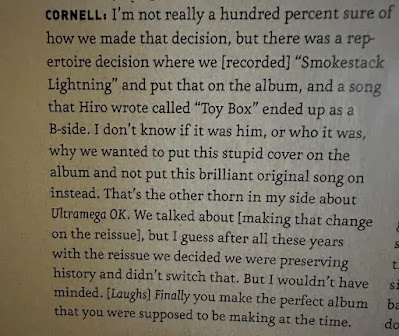I was inspired by a podcast called The 500 hosted by New York-based comedian Josh Adam Meyers. His goal, and mine, is to explore Rolling Stone Magazine's 2012 edition of The 500 Greatest Albums of All Time.
Album: #154
Album Title: Moanin' at the Moonlight
How familiar was I with it before this week: Some
Song I am putting on my Spotify Playlist: Smoke Stack Lightning
As I continue this blog series counting down through Rolling Stone magazine’s 2012 edition of The 500 Greatest Albums of All Time, I still have 153 records left to bring to your attention. Among them are more than 20 albums by artists who were directly shaped by the raw power and deep soul of Howlin’ Wolf -- born Chester Arthur Burnett. In fact, when you scan the full list of 500, nearly 50 albums bear the unmistakable imprint of this American blues legend, whether through direct influence, stylistic echoes, or heartfelt homage. His growling voice, electrifying guitar, and wailing harmonica didn’t just define Chicago blues -- they helped lay the foundation for rock and roll, especially the rise of British rock in the late ‘60s.
As I’ve mentioned in earlier posts, I went through a serious blues phase in my early 20s -- sparked by picking up Crossroads, the massive four-CD Eric Clapton box set. This was pre-internet, so my deep dive into the blues came through liner notes and CD rentals from places like The Software Library and the Western Store on my university campus in London, Ontario.Before setting out on a solo road trip to Calgary, more than 3,200 kilometers from home, I made a handful of cassette tapes packed with blues tracks. Among them, a heavy dose of Howlin’ Wolf, much of it lifted from a CD I’d rented called The London Howlin’ Wolf Sessions. This was a fortuitous choice. I later learned this album was a significant piece of music history. It was one of the first true blues “super sessions”, pairing a towering blues legend with some of rock’s most revered second-generation players – Eric Clapton, Steve Winwood, Charlie Watts, and Bill Wyman. It wasn’t just a record; it was a bridge between eras, and it became part of my soundtrack on the open road.
I did not pick up that CD because I understood its legendary importance. It was just one of the half-dozen blues recordings available at those outlets. However, retroactively, I am learning to understand the gravitas of those sessions.Imagine, if you will:
May 1970. The air inside Olympic Studios is thick with anticipation -- and cigarette smoke. Eric Clapton, already a guitar god, adjusts his amp with a flicker of nervous energy. Ringo Starr behind the drum kit, taps out a rhythm while engineers check levels. Although Bill Wyman and Charlie Watts are unavailable on the first day of recording, the room still buzzes with star power.
Then he arrives
Howlin’ Wolf -- six-foot-six, topping 300 pounds, and every inch a legend -- steps into the studio. Nearly 60, he carries the weight of the blues in his voice, his stance, his very presence. This isn’t just a recording session. It’s a summit. A seismic meeting of generations.
By his side is Hubert Sumlin, his longtime guitarist and musical shadow. He has been flown in at Clapton’s insistence after Chess Records initially balked at covering Sumlin's expenses. Clapton once said he’d give anything to play with Wolf. Now, guitar in hand, he watches his hero take the mic.
The room falls silent.
The tape rolls.
And history begins.
 |
| Clapton (left) with Wolf during those May, 1970 London recording sessions. |
Many artists on The 500 list have reinterpreted it (The Grateful Dead, The Yardbirds) but one of my personal favorites is the version by Soundgarden, featured on their 1988 debut album Ultramega OK. Their take is gritty, distorted, and full of early grunge energy. Interestingly, while researching this post, I discovered that Chris Cornell later expressed regret about including the cover instead of an original track. (See below.)
 |
| Soundgarden's Chris Cornell in an interview about Ultramega OK. |


.jpg)











.jpg)









.jpg)
.jpg)
.jpg)











